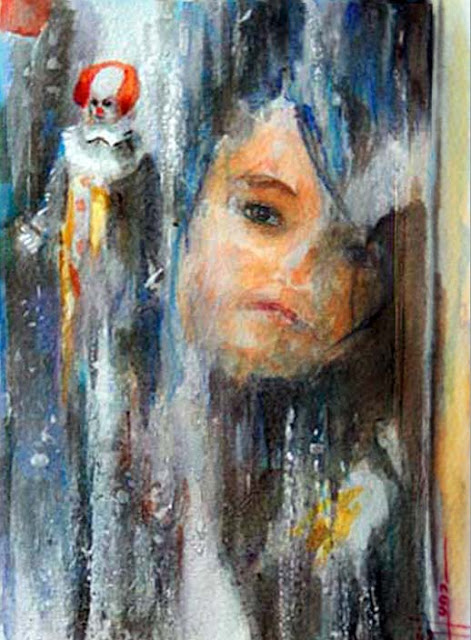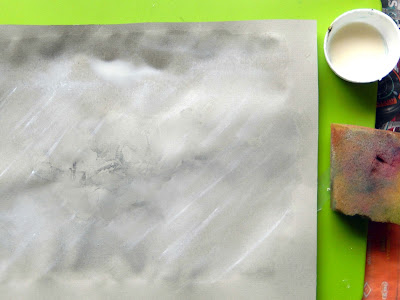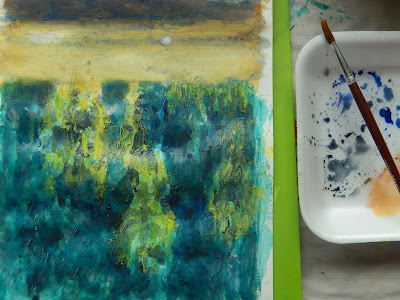Most watercolours fail because too much water is used and the results are a wishy- washy mess. So, let´s come to grips with this important subject.
The question you must always ask is Where is the water? Is it in the brush, the palette or on the paper?
If you have a lot water in your brush and water on the paper, the result is two lots of water combining and flooding everywhere out of control. To have full control of water, you must have a palette with a flat mixing area that does not collect unwanted water. It is also advantageous to have one with open-ended colour wells.
So here are the five most important ways of water control. Dry on Dry Wet on Dry Wet on Wet Dry on Wet The Half-loaded Brush |
Final result for this process
"There is a clown outside my window"
This painting it was made basically wet on dry
If you load you brush with wet paint and paint on dry paper, an area is produced which is soft and flowing in the middle but with hard edges.
(No water on the paper and water in the brush) nevertheless I used a lot of wáter at my brush, the initial drwg it was made with watercolored pencil, so the lines are easily lost after color addition on it, I did some masking for guidance but I tried to avoid it, as much as posible, I tilted the paper for mixing purposes and once the painted is added with brush I can add additional color which follows the semi wet path made it by the wet brush
Like I said this painting has been made controlling the amount of wáter in the brush, so it was easy to complete the features through out the face and in the clown, because the paper needs to be dry or semi-dry to apply color with just the brush mixing and blending just in the paper
The final touch rubbing a soap bar over the paper and then paint, it will form Little painting drops, Where ever the soap lands, it will push the paint away.(ideal for the window in this case)
Remarks
Once the surface is dry, you can glaze, you can add more water and drop in more pigments, in fact, you can overpaint your entire pic if you wish. but the paper MUST be fully dry.
What you cannot safely do is work on DAMP PAPER.What is damp paper?
Damp paper is when the sheen has gone from the surface.
A very wet surface will have lots of water on it, and the paint will run about all over the place when you tilt your board.









































